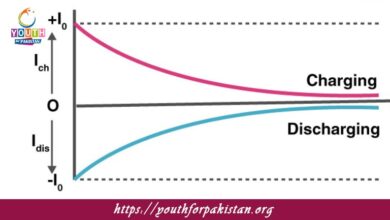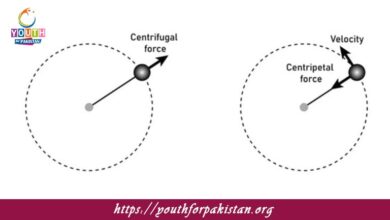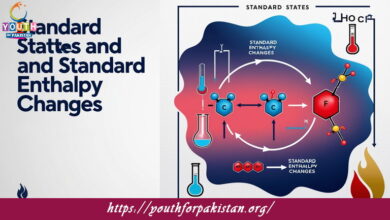Photosynthesis MDCAT MCQs with Answers
Welcome to the Photosynthesis MDCAT MCQs with Answers. In this post, we have shared Photosynthesis Multiple Choice Questions and Answers for PMC MDCAT 2024. Each question in MDCAT Biology offers a chance to enhance your knowledge regarding Photosynthesis MCQs in this MDCAT Online Test.
What is the primary pigment involved in photosynthesis?
a) Carotene
b) Chlorophyll
c) Xanthophyll
d) Phycobilin
Which part of the plant cell contains chlorophyll?
a) Mitochondria
b) Nucleus
c) Chloroplast
d) Ribosome
What are the two main stages of photosynthesis?
a) Light-dependent and light-independent reactions
b) Krebs cycle and glycolysis
c) Fermentation and respiration
d) Electron transport chain and citric acid cycle
Where do the light-dependent reactions of photosynthesis take place?
a) Cytoplasm
b) Chloroplast stroma
c) Thylakoid membranes
d) Mitochondrial matrix
What is the main purpose of the light-dependent reactions?
a) To fix carbon dioxide
b) To produce glucose
c) To convert light energy into chemical energy
d) To synthesize fatty acids
Which molecule is the final electron acceptor in the light-dependent reactions of photosynthesis?
a) NADP+
b) Oxygen
c) ATP
d) Water
What is the role of water in the light-dependent reactions of photosynthesis?
a) To provide carbon dioxide
b) To act as an electron donor
c) To produce glucose
d) To release oxygen
Which molecule is produced as a byproduct of the light-dependent reactions?
a) Glucose
b) Carbon dioxide
c) Oxygen
d) ATP
Where do the light-independent reactions (Calvin cycle) occur?
a) Thylakoid membranes
b) Chloroplast stroma
c) Mitochondrial matrix
d) Cytoplasm
Which enzyme catalyzes the fixation of carbon dioxide in the Calvin cycle?
a) ATP synthase
b) RuBisCO
c) NADP+ reductase
d) Pyruvate kinase
What is the primary product of the Calvin cycle?
a) Oxygen
b) ATP
c) Glucose
d) NADPH
How does increased light intensity affect the rate of photosynthesis?
a) It decreases the rate
b) It has no effect
c) It increases the rate up to a point
d) It stops the process
What happens to the rate of photosynthesis when carbon dioxide concentration increases?
a) It decreases
b) It remains constant
c) It increases up to a certain point
d) It stops
What is the primary role of chlorophyll in photosynthesis?
a) To absorb light energy
b) To produce glucose
c) To release oxygen
d) To fix carbon dioxide
What type of light is most effective for photosynthesis?
a) Blue light
b) Red light
c) Green light
d) Yellow light
Which of the following is not a product of the light-dependent reactions?
a) ATP
b) NADPH
c) Oxygen
d) Glucose
What role does ATP play in the Calvin cycle?
a) It provides energy for the fixation of carbon dioxide
b) It acts as an electron carrier
c) It is used to release oxygen
d) It converts water to glucose
Which gas is a reactant in photosynthesis?
a) Nitrogen
b) Oxygen
c) Carbon dioxide
d) Argon
How does temperature affect the rate of photosynthesis?
a) Higher temperatures always increase the rate
b) Lower temperatures always increase the rate
c) The rate increases up to an optimum temperature and then decreases
d) Temperature has no effect
What is the main purpose of the light-independent reactions?
a) To convert light energy into chemical energy
b) To produce ATP and NADPH
c) To fix carbon dioxide and produce glucose
d) To release oxygen
Which component of chlorophyll absorbs light energy?
a) The porphyrin ring
b) The hydrocarbon tail
c) The stomata
d) The thylakoid membrane
What is the role of NADPH in photosynthesis?
a) To release oxygen
b) To absorb light energy
c) To provide electrons for the Calvin cycle
d) To produce ATP
In which part of the chloroplast does the Calvin cycle take place?
a) Thylakoid lumen
b) Stroma
c) Outer membrane
d) Inner membrane
How do plants release oxygen during photosynthesis?
a) Through the Calvin cycle
b) By splitting water molecules in the light-dependent reactions
c) By converting glucose to carbon dioxide
d) Through the electron transport chain
Which part of the chloroplast contains the light-absorbing pigments?
a) Stroma
b) Thylakoid membranes
c) Outer membrane
d) Inner membrane
What is the effect of increasing the concentration of chlorophyll on photosynthesis?
a) It decreases the rate
b) It has no effect
c) It increases the rate
d) It stops the process
Which of the following does not affect the rate of photosynthesis?
a) Light intensity
b) Carbon dioxide concentration
c) Soil pH
d) Temperature
What happens to the ATP produced in the light-dependent reactions?
a) It is used in the light-independent reactions
b) It is stored in the chloroplast
c) It is converted to NADPH
d) It is released as oxygen
Which type of photosynthesis is adapted to hot, dry environments?
a) C3 photosynthesis
b) C4 photosynthesis
c) CAM photosynthesis
d) All of the above
What is the main product of the light-dependent reactions used in the Calvin cycle?
a) Carbon dioxide
b) NADPH
c) Oxygen
d) Glucose
Which process converts light energy into chemical energy during photosynthesis?
a) Calvin cycle
b) Light-dependent reactions
c) Glycolysis
d) Citric acid cycle
What is the primary function of the thylakoid membrane?
a) To fix carbon dioxide
b) To absorb light energy
c) To produce glucose
d) To store ATP
In which part of the photosynthetic process is ATP synthesized?
a) Light-dependent reactions
b) Calvin cycle
c) Citric acid cycle
d) Glycolysis
Which of the following is not a function of photosynthesis?
a) Production of glucose
b) Production of oxygen
c) Production of ATP
d) Production of carbon dioxide
What is the effect of a higher temperature on the rate of photosynthesis?
a) It always increases the rate
b) It decreases the rate below a certain temperature
c) It has no effect
d) It increases the rate up to an optimum temperature, then decreases
Which molecule is considered the “energy currency” of the cell in photosynthesis?
a) NADPH
b) ATP
c) Glucose
d) Carbon dioxide
Which light-absorbing pigment is primarily responsible for the green color of plants?
a) Carotenoids
b) Phycobilins
c) Chlorophyll a
d) Chlorophyll b
What is the role of RuBisCO in the Calvin cycle?
a) To produce ATP
b) To fix carbon dioxide
c) To release oxygen
d) To split water molecules
Which of the following is not a stage of photosynthesis?
a) Light-dependent reactions
b) Calvin cycle
c) Krebs cycle
d) Light-independent reactions
What substance is the source of the oxygen released during photosynthesis?
a) Glucose
b) Carbon dioxide
c) Water
d) NADPH
What happens to the NADPH produced in the light-dependent reactions?
a) It is used in the Calvin cycle
b) It is converted to glucose
c) It is released as oxygen
d) It is stored in the thylakoid membrane
Which of the following factors can limit the rate of photosynthesis?
a) Water availability
b) Light intensity
c) Carbon dioxide concentration
d) All of the above
What is the role of the stroma in the chloroplast?
a) To absorb light energy
b) To fix carbon dioxide
c) To store ATP
d) To release oxygen
If you are interested to enhance your knowledge regarding Physics, Chemistry, Computer, and Biology please click on the link of each category, you will be redirected to dedicated website for each category.




